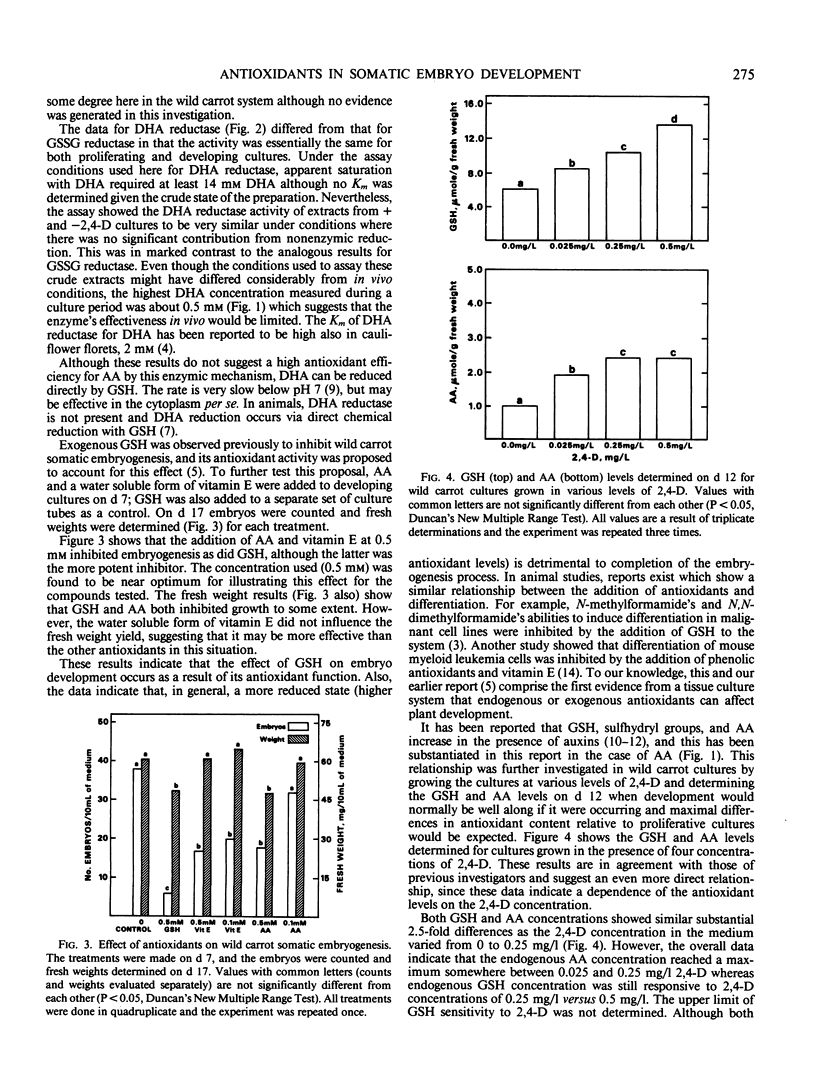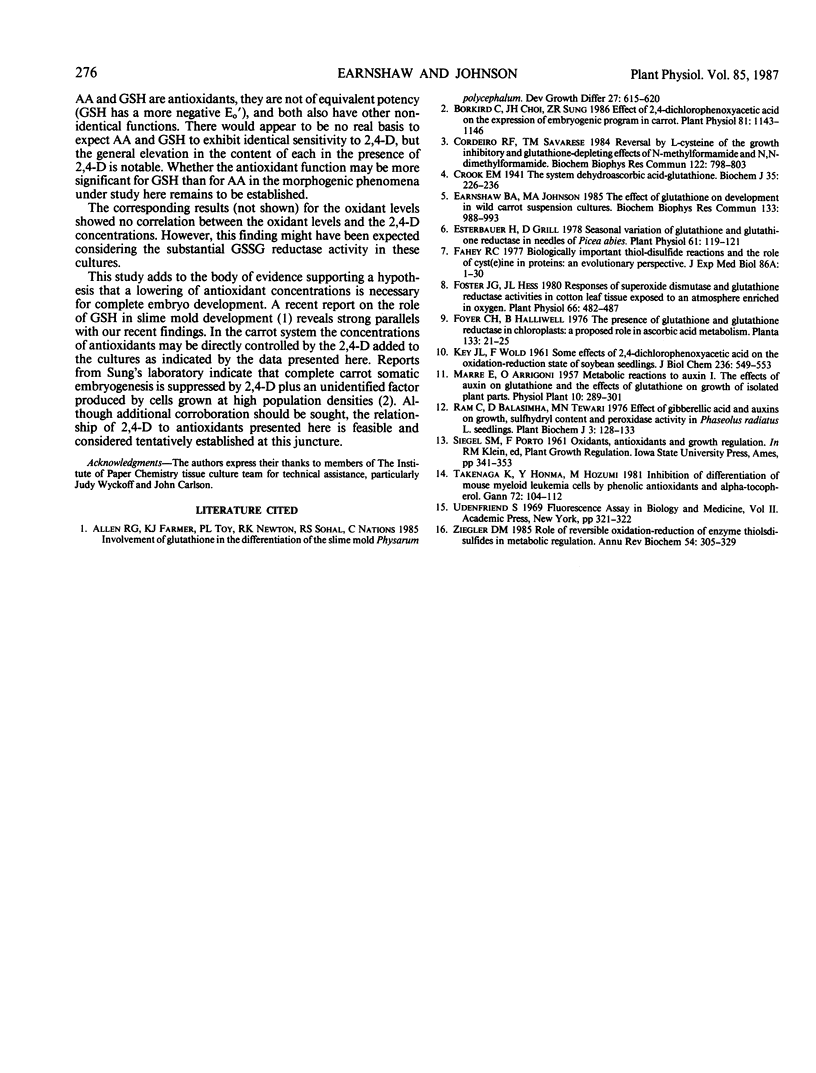Abstract
As we previously reported for glutathione (GSH), both ascorbic acid (AA) and vitamin E were observed to suppress wild carrot (Daucus carota L.) somatic embryogenesis with little concomitant effect on biomass. Endogenous concentrations of AA were lower during embryo development than during cell proliferation, exhibiting a temporal pattern nearly identical to that of GSH. GSSG (oxidized GSH) reductase was found to be considerably more active in proliferating than in developing cultures, whereas no difference was evident in the case of dehydroascorbate (DHA) reductase. Both GSH and AA concentrations in these cells are governed by 2,4-D. These results show that redox status is a strong determinant of proliferative versus developmental growth and indicate that the mode of action of 2,4-D in this system may be explained at least in part by its influence on endogenous antioxidant levels.
Full text
PDF



Selected References
These references are in PubMed. This may not be the complete list of references from this article.
- Borkird C., Choi J. H., Sung Z. R. Effect of 2,4-dichlorophenoxyacetic Acid on the expression of embryogenic program in carrot. Plant Physiol. 1986 Aug;81(4):1143–1146. doi: 10.1104/pp.81.4.1143. [DOI] [PMC free article] [PubMed] [Google Scholar]
- Cordeiro R. F., Savarese T. M. Reversal by L-cysteine of the growth inhibitory and glutathione-depleting effects of N-methylformamide and N,N-dimethylformamide. Biochem Biophys Res Commun. 1984 Jul 31;122(2):798–803. doi: 10.1016/s0006-291x(84)80104-7. [DOI] [PubMed] [Google Scholar]
- Crook E. M. The system dehydroascorbic acid-glutathione. Biochem J. 1941 Mar;35(3):226–236. doi: 10.1042/bj0350226. [DOI] [PMC free article] [PubMed] [Google Scholar]
- Earnshaw B. A., Johnson M. A. The effect of glutathione on development in wild carrot suspension cultures. Biochem Biophys Res Commun. 1985 Dec 31;133(3):988–993. doi: 10.1016/0006-291x(85)91233-1. [DOI] [PubMed] [Google Scholar]
- Esterbauer H., Grill D. Seasonal Variation of Glutathione and Glutathione Reductase in Needles of Picea abies. Plant Physiol. 1978 Jan;61(1):119–121. doi: 10.1104/pp.61.1.119. [DOI] [PMC free article] [PubMed] [Google Scholar]
- Fahey R. C. Biologically important thiol-disulfide reactions and the role of cyst(e)ine in proteins: an evolutionary perspective. Adv Exp Med Biol. 1977;86A:1–30. doi: 10.1007/978-1-4684-3282-4_1. [DOI] [PubMed] [Google Scholar]
- Foster J. G., Hess J. L. Responses of superoxide dismutase and glutathione reductase activities in cotton leaf tissue exposed to an atmosphere enriched in oxygen. Plant Physiol. 1980 Sep;66(3):482–487. doi: 10.1104/pp.66.3.482. [DOI] [PMC free article] [PubMed] [Google Scholar]
- KEY J. L., WOLD F. Some effects of 2,4-dichlorophenoxyacetic acid on the oxidation-reduction state of soybean seedlings. J Biol Chem. 1961 Feb;236:549–553. [PubMed] [Google Scholar]
- Takenaga K., Honma Y., Hozumi M. Inhibition of differentiation of mouse myeloid leukemia cells by phenolic antioxidants and alpha-tocopherol. Gan. 1981 Feb;72(1):104–112. [PubMed] [Google Scholar]
- Ziegler D. M. Role of reversible oxidation-reduction of enzyme thiols-disulfides in metabolic regulation. Annu Rev Biochem. 1985;54:305–329. doi: 10.1146/annurev.bi.54.070185.001513. [DOI] [PubMed] [Google Scholar]


